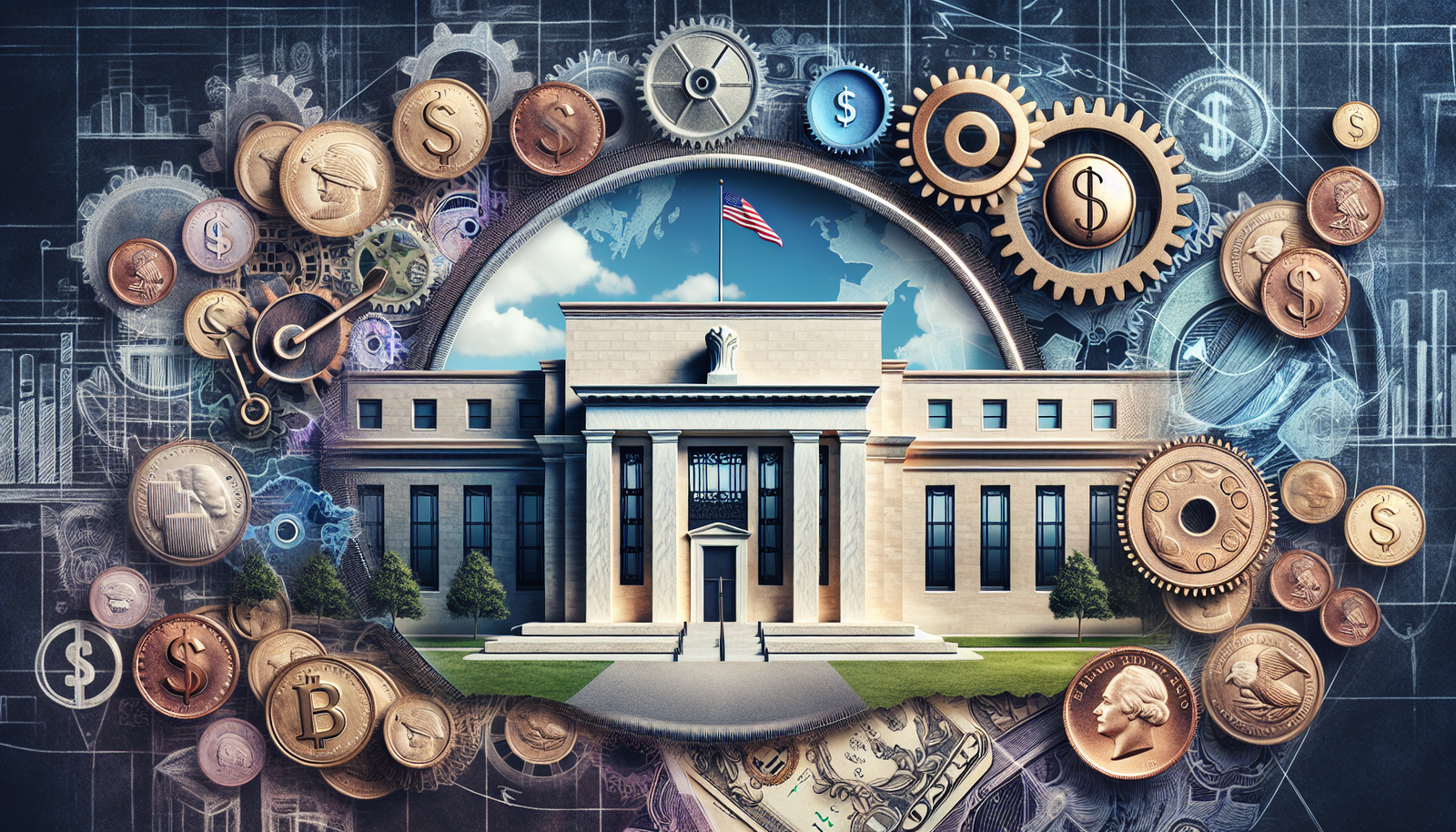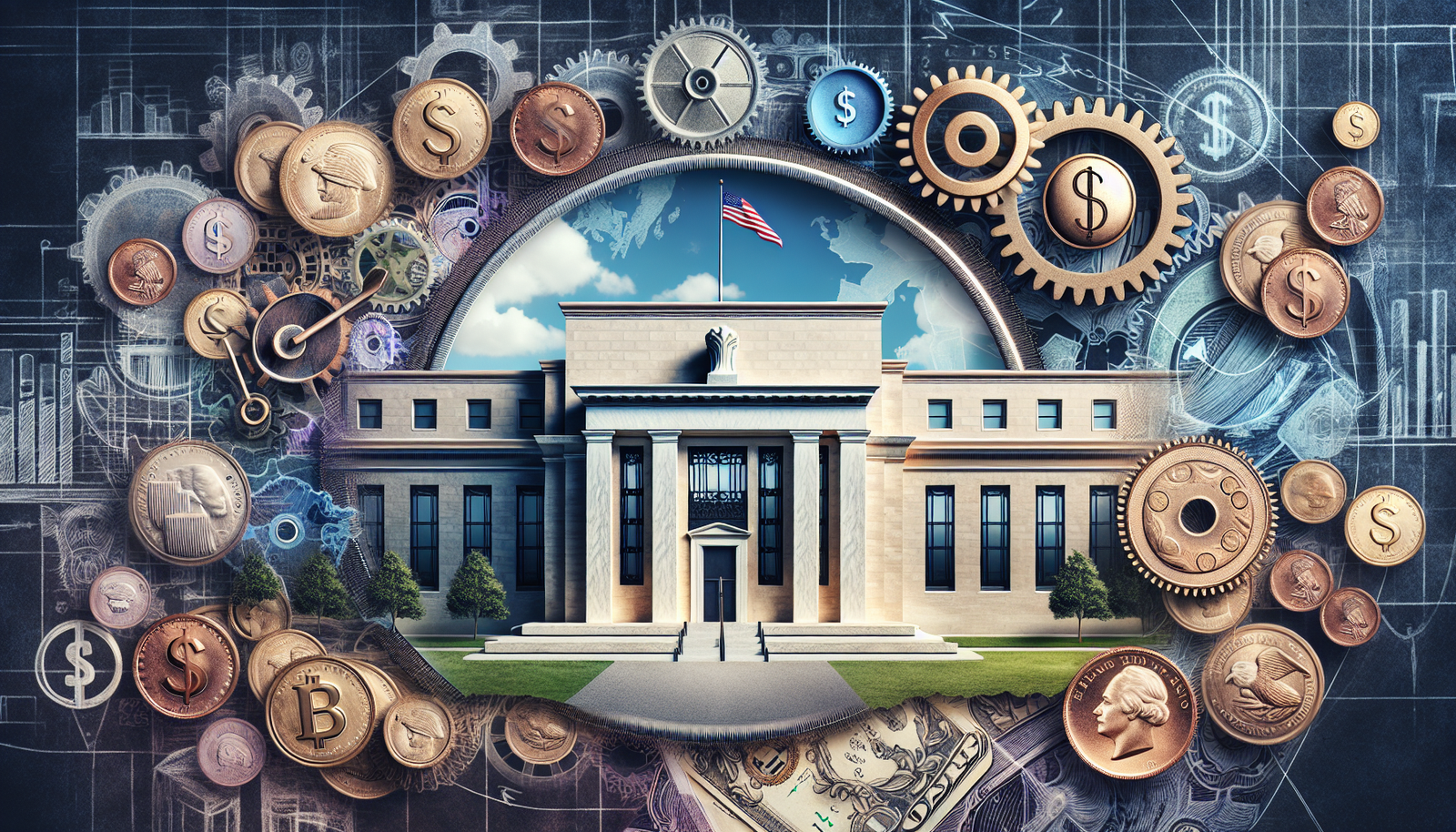
Untapped possibilities and unseen opportunities lie within the dynamic world of financial banking, with the Federal Reserve Discount Window being a central player. This mysterious yet influential entity occupies a crucial part of the United States’ monetary policy. It’s as if you are on a thrilling roller coaster ride through the dense, complex forest of financial macroeconomics. Brace yourself as you explore the mechanisms, roles, and impacts of the Federal Reserve Discount Window on the national economy, allowing you to feast your senses on enthralling data, vivid insights, and stimulating information.

Understanding the Federal Reserve Discount Window
When you dive into the world of finance and economics, you’ll often hear about the Federal Reserve Discount Window. It might seem complicated at first, but don’t feel intimidated. Let’s unravel the terms and comprehend the concept together.
Definition of the Federal Reserve Discount Window
Imagine a window. Through it, you see financial institutions like banks and credit unions borrowing money from the Federal Reserve. This magical window is the Federal Reserve’s Discount Window. Quite understandably, it’s not an actual window. Instead, it’s a symbolic representation of a monetary policy tool, a channel for lending funds to those financial institutions.
Purpose and Role of the Discount Window
The Federal Reserve isn’t eavesdropping on the financial scene from a real window; it’s playing a proactive role in maintaining its stability. We can best describe the Discount Window’s purpose as a safety net for banks during times of liquidity strain. By providing short-term loans, it ensures that the banks can continue to operate smoothly, liquidity remains sufficient, and the overall financial system stays robust.
Understanding the ‘Lender of Last Resort’ Concept
There are times when no one, except probably your closest friend, would lend you money. Financial institutions also experience such tight corners. The Federal Reserve, through the Discount Window, becomes their ultimate friend, their ‘lender of last resort.’ When traditional channels dry up, it provides the much-needed liquidity, thus safeguarding the financial system from tumbling into chaos.
Origins and History of the Federal Reserve Discount Window
Let’s take a trip back in time and trace the origins of the Discount Window.
Early Establishment and Purpose of the Discount Window
The Discount Window traces its roots back to the founding of the Federal Reserve System in 1913. Born from the realization that liquidity crises could wreak havoc on the economy, it was meant to play the role of a guardian angel for banks. Its purpose then, as it is now, was to infuse funds into the system when the banks found themselves in a liquidity crunch.
Changes and Reforms in the Discount Window Policy Over Time
Nothing remains the same over the years, and the Discount Window is no exception. Over the years, it has gone through several changes and reforms. The major twist came in 2003 when the Federal Reserve introduced the ‘primary credit’ lending program, opening the Discount Window to healthy banks as a backup source of funding, thus broadening its reach.
Impact of Financial Crises on the Discount Window Operations
Financial crises have led to some critical turning points in the functioning of the Discount Window. During such tumultuous periods, it often stepped in to inject liquidity into the economy. The 2008 financial crisis surreally brought its ‘lender of last resort’ capacity into play. Since then, its priority has squarely lain in serving to counteract future crises.
Types of Discount Window Loans
There’s not just one type of loan available at the Discount Window. It caters to different requirements by offering three kinds of credits.
Primary Credit Loans
Primarily for financially healthy institutions, primary credit loans are readily accessible, hassle-free sources of funds. If you’re in good financial shape but facing short-term liquidity needs, this is the boon for you.
Secondary Credit Loans
Then, there are secondary credit loans. These are designed for those institutions that don’t qualify for primary credit. Call it a helping hand for those stuck in a challenging situation, or a light at the end of the tunnel.
Seasonal Credit Loans
And finally, we have seasonal credit loans. These are for smaller institutions facing predictable seasonal swings in their loans and deposits. It’s the magic key that smoothes out the cyclical ups and downs.

Qualification and Eligibility for Discount Window Loans
While the Discount Window is known for its broad and generous lending, it doesn’t mean that there’s a free-for-all situation. There are specific eligibility and qualification criteria.
Eligibility Criteria for Financial Institutions
Only federally insured depository institutions can apply for loans at the Discount Window. So, if you’re a financial institution keen to get a loan, you first need to ensure you’re federally insured to even stand a chance.
Assessment of Financial Condition for Qualification
The Federal Reserve doesn’t blindfold itself while making the loans. Institutions are assessed based on their financial health. The overall condition, including capital, asset quality, and earnings, is meticulously evaluated before deciding on the loan request.
Collateral requirements
In the journey of borrowing from the Federal Reserve, collateral is your loyal companion. It’s a requirement, and without it, you can bid goodbye to your loan aspirations. But remember, not all assets qualify as collateral. They need to meet the Federal Reserve’s standards.
The Federal Reserve Discount Rate
A significant part of the Discount Window narrative is the Discount Rate. Again, we’re not talking about any seasonal discount, it’s the interest charged on loans from the Discount Window.
Definition of the Discount Rate
The Discount Rate, in simplest terms, is the interest rate at which the Federal Reserve lends money to financial institutions. Imagine it as a price tag attached to the funds borrowed from the Discount Window.
How the Discount Rate is determined
Now, who decides this rate? A group of people sitting in the Federal Reserve Boards. They meet routinely to set the Discount Rate, bail in every piece of economic tinsel – inflation, employment, economic growth, etc.
Impact of the Discount Rate On the Economy
The Discount Rate may seem like a number, but it can be a powerful economic lever. A lower Discount Rate can encourage banks to borrow more, thereby injecting more money into the economy and stimulating economic growth. Conversely, a higher rate can discourage borrowing, leading to a contraction in economic activity.
Process of Accessing the Discount Window
Looking to borrow from the Discount Window? There are certain steps to be followed.
Step-by-step Process for Borrowing
Once you’ve ensured that you meet the eligibility criteria and have suitable collateral, you can apply for the Discount Window loan. Following the application, the Federal Reserve assesses your financial health. If all goes well, your loan gets approved.
Repurchase Agreements and the Discount Window
In the financial world, Repurchase Agreements or ‘Repos’ are a common way to borrow, temporarily trading securities for cash. While Repos and Discount Window loans may seem similar, the Discount Window provides a broader safety net for banks during financial stress.
Usage Restrictions and Stipulations
The Discount Window isn’t a magical cash tree that banks can shake whenever they like. There are strict usage restrictions. Plus, institutions must ensure that they are quite literally using it as a last resort one, which is part and parcel of maintaining a healthy financial eco-system.
Reporting and Transparency at the Discount Window
Trust and transparency are the building blocks of any financial system. The Discount Window, too, values these principles.
Release of Borrowing Information
The Federal Reserve releases lending information every week, reporting the outstanding amount across its lending facilities, including the Discount Window. This transparency paints an accurate picture of the Federal Reserve’s activities and its contributions in steering the financial system.
Lending Data and Financial Stability
The borrowing data’s systematic and regular release ensures financial stability. It provides a peek into the pulse of the banking system, thereby boosting investor confidence and pacing the country’s economic health track.
Impact of Transparency on Discount Window Stigma
Despite its instrumental role, the Discount Window often faces a ‘stigma’ problem. The fear of appearing weak often discourages banks from borrowing. Transparency can drive away this stigma by educating the public about the Discount Window’s role in maintaining economic stability.
Federal Reserve’s Response to Economic Crises
When economic storms gather, the Federal Reserve steps up and steers the ship with tools like the Discount Window.
Role of the Discount Window in Economic Stabilization
Whether it’s the Great Depression or the 2008 Financial Crisis, the Discount Window has proven itself as a major player in stabilizing the economy. It emerges as a robust line of defense, pumping liquidity and optimism back into the system.
Response during the Financial Crisis of 2008
As the 2008 Financial Crisis roiled markets worldwide, the Discount Window sprang into action. It helped ensure that financial institutions had the liquidity necessary to keep lending, thereby preventing a total collapse of the economy.
Current Discount Window Relevance and Strategies
Today, amidst the ever-changing financial landscape, the relevance of the Discount Window remains undiminished. It continues to play a critical role, ready to safeguard the financial system in times of unexpected shocks.
Critiques and Controversies of the Discount Window
Despite its pivotal role, the Discount Window has faced its share of backlash and criticism.
The Discount Window Stigma Problem
One of the most persistent problems surrounding the Discount Window is the stigma attached to it. Financial institutions fear that borrowing from the Window depicts them as weak, creating an unhealthy deterrent to its usage.
Potential for Moral Hazard
The concept of moral hazard also lurks in the subplot. The fear is that knowing the safety net of the Discount Window exists might prompt financial institutions to take riskier actions, since they know they can turn to the Discount Window in times of crisis.
Concerns Over Financial Institution Dependency
There are concerns over financial institutions becoming over-dependent on the Discount Window. Critics argue that such dependency can undermine the efficiency of the financial system in the longer run.
Future of the Federal Reserve Discount Window
Faced with a rapidly changing financial world, the Discount Window stands at the threshold of both challenges and opportunities.
Stigma Issues and Potential Solutions
Tackling the stigma problem is a crucial task lying ahead. Educating the public about the utility of the Discount Window, reiterating its role as a vital monetary policy tool, and pushing for more transparent operations, may be key in de-stigmatizing its usage.
Innovation and Changes in Monetary Policy
The Discount Window needs to stay apace with the changing dynamics of the financial world. Striding on the path of innovation and adapting to shifts in monetary policies will ensure its continued relevance and efficacy.
Impact of Changing Global Finance Landscape on the Discount Window
The globalization of finance brings forth new challenges for the Discount Window. It needs to address these challenges, adapt to newer realities and ensure that it continues to serve as a reliable harbour for financial institutions during storms.
In summary, the Federal Reserve’s Discount Window, being the beating heart of the financial system, ensures financial stability and steers the economy even during moments of crisis. Amidst evolving challenges and dynamics, it continues to play its role as the ‘lender of last resort,’ illuminating the path in otherwise chaotic times.

Leave a Reply